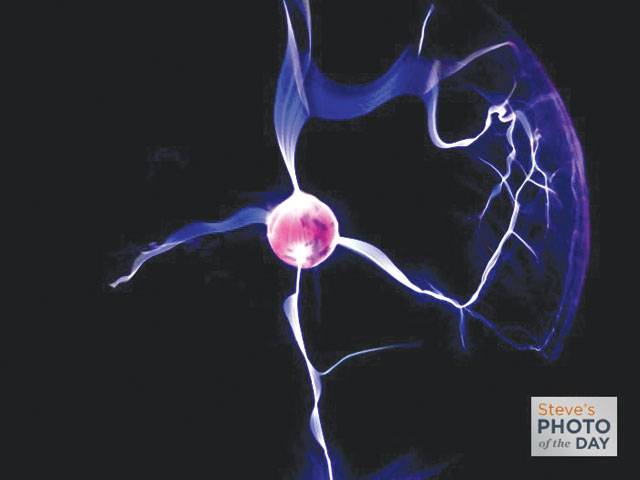Colorado
BBC
US researchers say they have developed a more efficient way to produce a kind of ball lightning in the lab.
The Colorado team made brilliant clouds of plasma emerge from a specially prepared solution and maintained them for nearly half a second. In nature, ball lightning has been seen to float across land or through buildings and to even bounce down the aisles of aircraft. But its rarity has made it extremely hard to study and to understand.
The US Air Force Academy team hopes its new approach can help science to better understand this strange spectacle.
Dr Mike Lindsay, who led the study published in the Journal of Physical Chemistry, said: "Ball lightning is used almost generically to describe phenomena seen in nature that aren't described by normal lightning, bead lightning or things like 'St Elmo's fire', or aurora. And likely it's not one thing but several things that have similar observables."
According to some reports, the famous physicist and inventor Nikola Tesla was able to make ball lightning in his lab when he was based at Colorado Springs in 1899/1900. But if he did create it, he did not describe his methods in a way that has allowed anyone since to reproduce his work. Eye-witness reports of ball lightning vary wildly in the size of the ball, how long it lasts, and how it moves.
Rhys Phillips, a lightning research engineer and science broadcaster, said: "To me at least, lightning is still not the word for what we're talking about here. We understand lightning to be a very fast discharge from one point to another - for example, a cloud to the Earth - (through a complex process admittedly) and the observations in [the current] paper don't describe that."
Dr Lindsay does not disagree with this assessment.
In the paper, he and his colleagues describe previous research that generated what they refer to as a "glow discharge" of plasma (a charged gas) above an electrolyte solution.
The new experiments re-use those earlier methods, but then manipulate the conditions to try to get the balls to last as long as possible.
Dr Lindsay explained: "I don't think what we've created is lightning, although the initial stages of the electrical discharge that produce this 'plasmoid' have many similarities to lightning. They're just electric arcs - in this case, electric arcs to the surface of this solution of electrolytes. And then what happens is this plasmoid emerges from it.
"So, I would agree that [going by] the general definition of lightning - no, this is not the same."
Using high-speed cameras to monitor their creations, the researchers found that altering the acidity of the electrolyte solution led to longer lasting balls.
This is beneficial, as the longer the spheres persist, the longer the team has to investigate their properties.
As well as video cameras, the scientists used other imagining techniques to look at the infra-red profile of the balls, and how their density and structure changed over time.
The results suggest water vapour and carbon dioxide are present within the balls, along with some other, as-yet unidentified, features.
Although the academy researchers concede there is an "open question" still over how representative their creations are, only by extending the lifetime of the spheres and opening them up to more detailed study will it be possible to find a more convincing answer, they argue.
"I need to be honest: we're not sure that this is the same phenomenon as ball lightning," said Dr Lindsay.
"It has many similarities, and it's clearly not similar to better known phenomena such as St Elmo's fire or bead lightning, which are well known and understood in nature.
"Our research showed that there was still room to increase the lifetime and we're in the process of further reaching those conditions. We need to purchase some more equipment to reach those domains," he told BBC News.
Thursday, April 18, 2024
Ball lightning tech developed

Hepatitis Challenge
April 18, 2024
IMF Predictions
April 18, 2024
Wheat War
April 18, 2024
Rail Revival
April 17, 2024
Addressing Climate Change
April 17, 2024
Justice denied
April 18, 2024
AI dilemmas unveiled
April 18, 2024
Tax tangle
April 18, 2024
Workforce inequality
April 17, 2024
New partnerships
April 17, 2024
ePaper - Nawaiwaqt
Advertisement
Nawaiwaqt Group | Copyright © 2024





